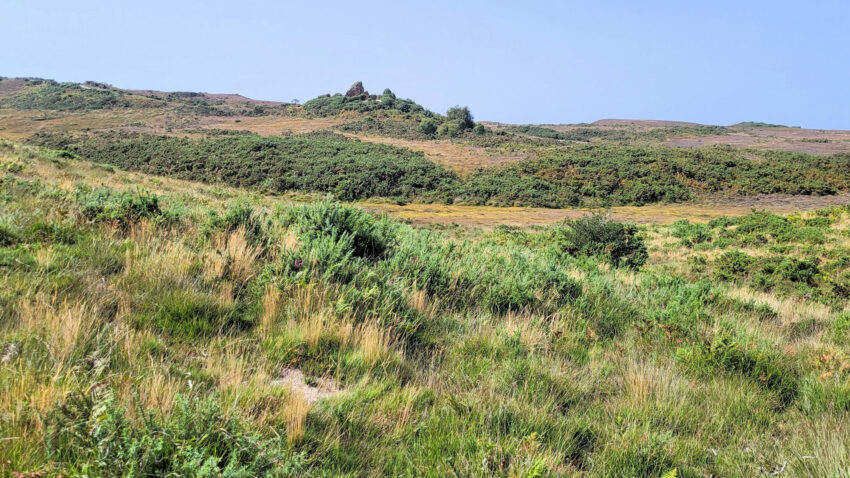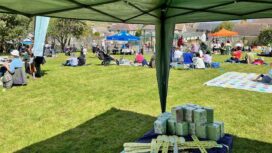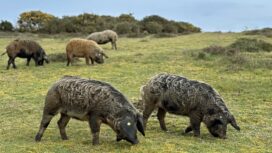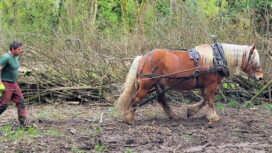A £1 million project to reinstate Dorset’s historic peatlands will start in autumn 2023 with half of the work taking place in Purbeck.
Although Purbeck may not seem the most likely place to find peat bogs there are seven local sites which will be part of the plan, nearly half of the total number of bogs involved in this new Dorset initiative, in both number and size.
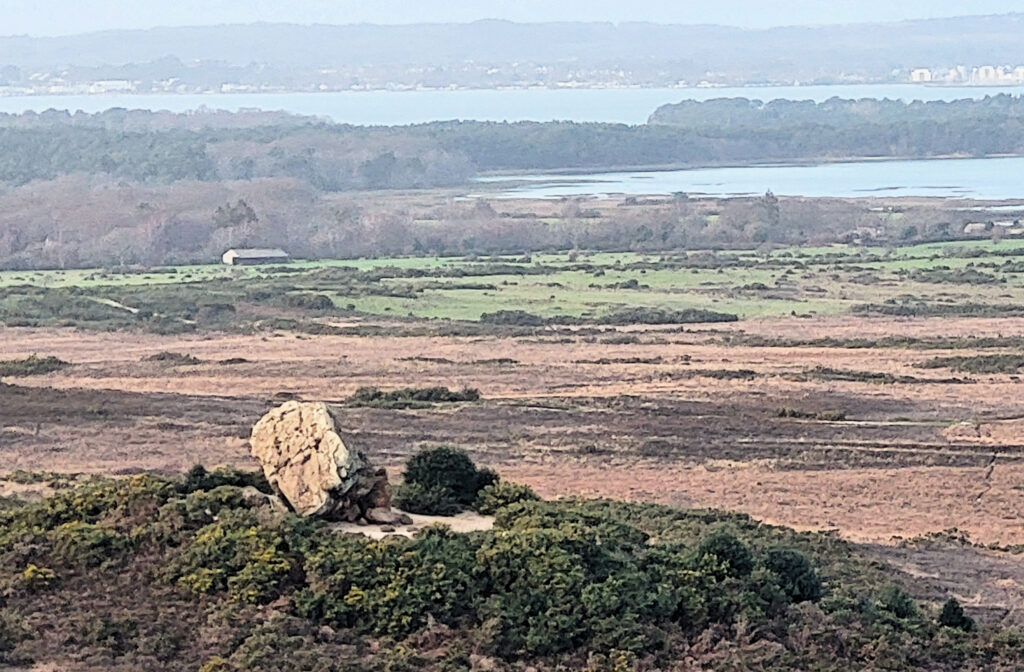
Agglestone Mire has largely been drained, but is to be restored as part of a £1 million peatland scheme in Dorset
Work begins at Agglestone in November 2023
Dorset Peat Partnership, led by Dorset Wildlife Trust, won a £750,000 grant from Defra, boosted by another £250,000 from other partners to rewet and restore 172 hectares of damaged peat bogs on 16 sites in the county over the next two years.
It is part of a larger government scheme to help tackle climate change, prevent flooding and recover lost wildlife habitats all in one, as part of a pledge to restore 135 square miles of peatlands.
Work will begin in Purbeck on National Trust land at Agglestone Mire, Greenlands Mire on the north side of Agglestone Rock, and Hartland Snag Valley, Gallows Hill in November 2023.
One benefit should be to help prevent flooding on Ferry Road near Knoll Beach, Studland, as peat soaks up heavy rainfall and releases it slowly.
Other schemes are taking place on land owned by the RSPB, Forestry England and the Holme estate at Stoborough Heath, Salterns Copse, Sandford Heath and Holme Lane Bog.
Drainage ditches will be blocked, filled with peat or heather bales and the water tables raised, which should have the effect of allowing mosses to grow and peat to form again within a few short years.
That in turn will encourage rare flowers, insects and birds back to the new peat bogs while also taking tonnes of carbon out of the atmosphere and locking it away underground.
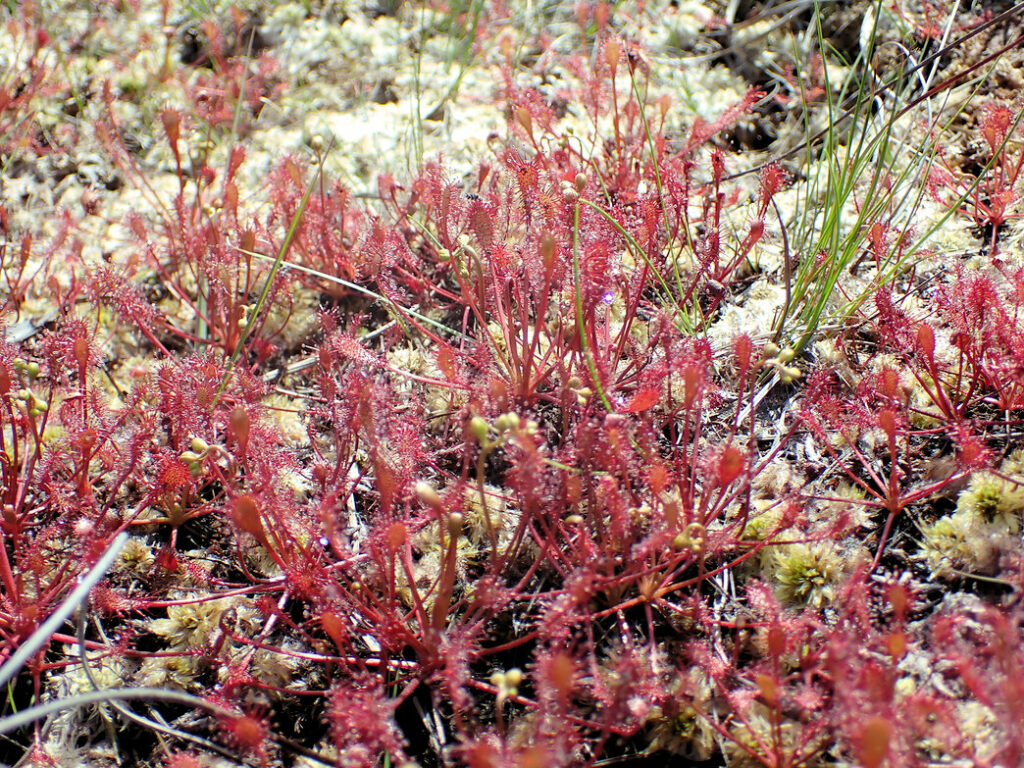
Carnivorous sundew plants trap insects in their sticky tentacles

The marsh gentian grows in only a few sites in the UK, including Dorset peatlands

Bog asphodel brighten up peatlands in early summer, attracting many insects
Really significant for rare insects and plants
David Brown, the National Trust’s lead ecologist, said:
“The Poole Harbour basin is a mixture of clays, sands and gravels, but where you get the clay you have permanently wet ground which would have naturally been peat forming mires or bogs.
“Unlike upland where there might be hundreds of thousands of hectares of solid peat bog, in Purbeck it is more of a mosaic with dry heathlands and small valleys which would once have been peat forming mires.
“They are not huge but as a whole they are really significant for their rare insects and plants, and also as one of our few long term carbon storage habitats.
“Lots of people are concerned about carbon and think of planting trees, which is great, but that only locks up carbon as long as the tree is actually growing and when it falls down and rots down all the carbon is released again.
“What happens in peat mires is that the mosses never fully decompose and much of the carbon remains locked up as peat, buried as long term storage, effectively like a fossil fuel being created.
“If we want to take seriously managing the land in Purbeck for carbon, then number one on the to-do list is to restore all the areas where peat naturally forms, most of which are badly degraded.”

Volunteers carry out a study on Stoborough Heath to identify the best areas to restore
Mires drained over the last 200 years
Over the past two centuries, Purbeck farmers tried to make the heathlands more productive by draining the wet areas to plant conifer trees or to turn them into pasture, which meant that peat no longer formed.
Now the plan is to restore the natural hydrology of the wet parts of Purbeck’s heaths, by blocking up drainage ditches with more peat or wooden barriers and heather bales to instantly slow down the flow of water, allowing mosses to grow back and peat to form.
Specialised machinery will be needed to work on the boggy sites, and some trees and grassy tussocks will have to be removed, with care being taken not to damage ecologically sensitive areas on the edges of the mires during the restoration.
A new ecosystem should establish itself quite quickly, including rare species of mosses and plants which grow well in Dorset – such as 11 species of carnivorous plants which trap, kill and eat insects.

Raft spiders walk on the waters of peat bogs and hunt insects and small fish

The hobby preys on dragonflies which are attracted to areas of standing water like peat bogs
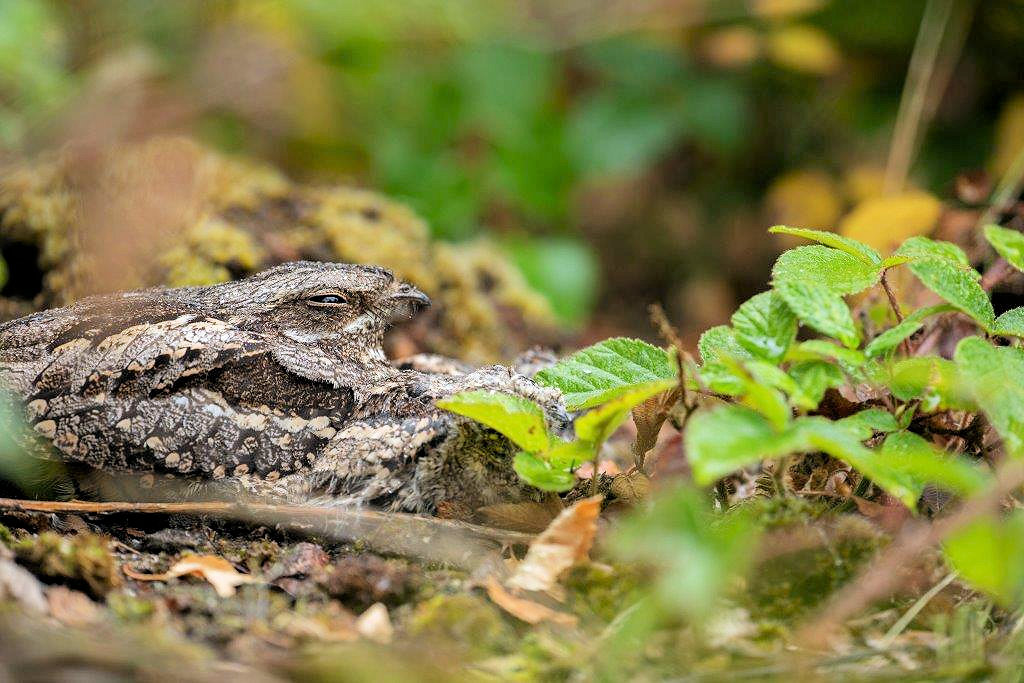
Ground nesting nightjars are attracted to areas like RSPB Arne with a large insect population
Rare raft spider is an aggressive hunter
David Brown added:
“You’d think that carnivorous plants are really exotic and you wouldn’t get them anywhere in Dorset, but actually people see them all the time without knowing what they are. There is one species called the Godlingston Sundew because it was originally found on Godlingston Heath in Purbeck.
“There are also important invertebrates like the nationally rare raft spider which floats on the bog pools and is a very aggressive hunter, and as the insects are part of a much bigger food chain all the birds and mammals will benefit too.
“Nightjars, although they don’t nest in the wet mires, are insect feeders so if you have insect rich wetlands, you have more food to attract them into the area.
“We should also see hobbies, a bird of prey which visits in the summer and specialises in eating dragonflies, catching them on the wing which is very impressive. You always see them flying over the mires, so if the mires are dried out you don’t see the birds.”

Although Agglestone appears to be heathland, the lower valleys were once all peat mires before they were drained
England’s national rainforests
Peatlands are an iconic feature of England’s landscape, often referred to as our national rainforest. They contain over half of the country’s terrestrial carbon stores and provide a haven for wildlife, as well as supporting better water quality and natural flood management.
Environment Minister Rebecca Pow said:
“Our peatlands hold over half of our terrestrial store of carbon, but with just 1 percent in a near natural state and soils drying out we must take urgent action to prevent further carbon from being emitted into the atmosphere.
“Backed by over £16 million of government funding these new landscape-scale projects will drive collaboration and supercharge peatland restoration across the country to tackle climate change and fight biodiversity loss.”
Further information
- Read about the Dorset Peat Partnership on the Dorset Wildlife Trust website
